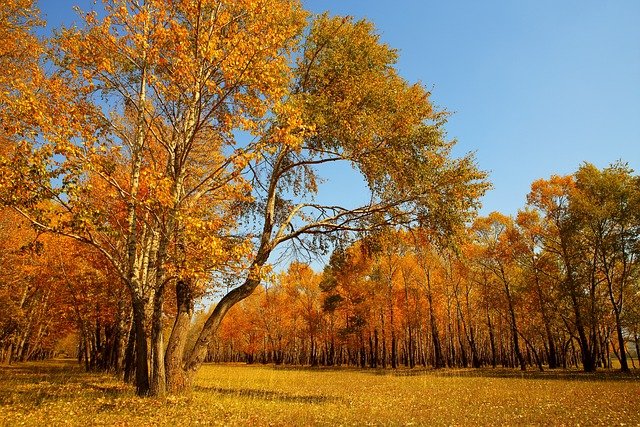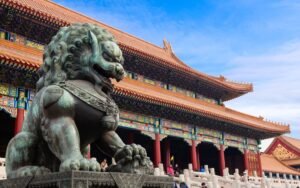China, the land of ancient traditions and modern marvels, is a country that captivates the imagination with its rich history, diverse culture, and stunning natural beauty. From the bustling cities to the serene countryside, China offers a unique blend of old and new, where ancient temples stand alongside towering skyscrapers, and traditional customs coexist with modern innovations. Whether you’re a history buff, a food lover, an art enthusiast, or a nature enthusiast, China has something to offer everyone. In this article, we will take you on a journey through the enchanting world of China, exploring its fascinating history, mouthwatering cuisine, breathtaking landscapes, cultural heritage, ancient architecture, artistic traditions, mysterious temples, stunning natural scenery, and unique folk customs and traditions.
Table of Contents
Toggle历史悠久 (Lìshǐ yōujiǔ): The Rich History of China
China has a history that spans over 5,000 years, making it one of the oldest civilizations in the world. From the ancient dynasties to the modern era, China’s history is filled with fascinating stories and legendary figures. One of the most iconic symbols of China’s history is the Great Wall. Built over 2,000 years ago to protect the country from invasions, the Great Wall stretches over 13,000 miles and is a testament to the ingenuity and determination of the Chinese people.
Another famous historical site in China is the Terracotta Warriors in Xi’an. Discovered in 1974 by local farmers, this army of life-sized clay soldiers was created to accompany Emperor Qin Shi Huang in the afterlife. The Terracotta Warriors are considered one of the greatest archaeological finds of the 20th century and provide valuable insights into ancient Chinese military tactics and artistry.
美食之旅 (Měishí zhī lǚ): A Culinary Adventure in China
China is a food lover’s paradise, with a cuisine that is as diverse as its culture. From spicy Sichuan dishes to delicate Cantonese dim sum, there is something to satisfy every palate. One of the most famous dishes in China is Peking duck, a succulent roast duck with crispy skin and tender meat. Another popular dish is Xiaolongbao, steamed dumplings filled with juicy pork and a flavorful broth.
Each region in China has its own unique culinary specialties. In the north, you can indulge in hearty dishes like dumplings and noodles, while in the south, you can savor fresh seafood and delicate flavors. In the west, you can try spicy Sichuan cuisine, known for its bold flavors and liberal use of chili peppers. And in the east, you can sample delicate Cantonese dishes and enjoy the freshest seafood.
中国的自然美 (Zhōngguó de zìrán měi): Exploring the Natural Beauty of China
| Location | Attraction | Visitors per year | Entry fee (GBP) |
|---|---|---|---|
| Zhangjiajie National Forest Park | Pillar-like formations | 30 million | 20 |
| Jiuzhaigou Valley | Crystal clear lakes and waterfalls | 1.5 million | 25 |
| Huangshan Mountain | Scenic hiking trails | 2 million | 15 |
| Guilin and Li River | Karst landscape and river cruises | 10 million | 10 |
China is blessed with some of the most stunning natural landscapes in the world. From towering mountains to picturesque valleys, there is no shortage of breathtaking scenery to explore. One of the most famous natural attractions in China is Zhangjiajie National Forest Park, known for its towering sandstone pillars that inspired the floating mountains in the movie Avatar. The park offers stunning views, hiking trails, and glass-bottomed bridges that allow visitors to experience the beauty of the landscape from a unique perspective.
Another must-visit destination is Jiuzhaigou Valley, a UNESCO World Heritage site known for its colorful lakes, waterfalls, and snow-capped peaks. The valley is home to a diverse range of flora and fauna and offers opportunities for hiking, photography, and wildlife spotting.
中国的文化遗产 (Zhōngguó de wénhuà yíchǎn): Discovering China’s Cultural Heritage
China’s rich cultural heritage is evident in its ancient traditions, art, and architecture. One of the most famous cultural sites in China is the Forbidden City in Beijing. Built during the Ming Dynasty, the Forbidden City was the imperial palace for over 500 years and is now a museum that showcases the grandeur and opulence of ancient Chinese emperors.
Another iconic cultural site is the Summer Palace, a vast imperial garden that served as a retreat for emperors during the hot summer months. The palace features beautiful pavilions, temples, and a serene lake, offering visitors a glimpse into the luxurious lifestyle of the imperial court.
古老的建筑 (Gǔlǎo de jiànzhù): Marveling at China’s Ancient Architecture
China is renowned for its ancient architectural styles, which are characterized by intricate designs, vibrant colors, and exquisite craftsmanship. One of the most famous examples of ancient Chinese architecture is the Temple of Heaven in Beijing. Built in the 15th century, the temple complex consists of several buildings and gardens and was used by emperors to pray for good harvests and divine guidance.
Another impressive architectural marvel is the Leshan Giant Buddha in Sichuan province. Carved into a cliff face overlooking the confluence of three rivers, this colossal statue stands at over 230 feet tall and is the largest stone Buddha statue in the world. The statue is a testament to the skill and dedication of ancient Chinese craftsmen.
中国的艺术 (Zhōngguó de yìshù): Appreciating China’s Artistic Traditions
China has a rich artistic heritage that spans thousands of years. From calligraphy to porcelain, Chinese art is known for its elegance, precision, and attention to detail. Calligraphy, the art of writing Chinese characters with a brush, is considered one of the highest forms of artistic expression in China. Each stroke is carefully executed, and the characters are imbued with meaning and beauty.
Porcelain, another famous Chinese art form, is known for its delicate beauty and exquisite craftsmanship. Chinese porcelain has been highly prized for centuries and is renowned for its translucent quality and intricate designs. The city of Jingdezhen in Jiangxi province is known as the “Porcelain Capital” of China and has been producing fine porcelain for over 1,000 years.
神秘的寺庙 (Shénmì de sìmiào): Uncovering the Mysteries of China’s Temples
China is a country with a rich religious heritage, and its temples are not only places of worship but also architectural wonders. One of the most famous temples in China is the Shaolin Temple in Henan province. Known as the birthplace of Zen Buddhism and the martial art of Kung Fu, the Shaolin Temple attracts visitors from around the world who come to learn about its history and witness the impressive Kung Fu performances.
Another mystical temple is located in the Wudang Mountains in Hubei province. The Wudang Mountains are considered one of the birthplaces of Taoism, a philosophy that emphasizes living in harmony with nature. The temples in the Wudang Mountains are known for their beautiful architecture, tranquil surroundings, and spiritual significance.
美丽的自然风光 (Měilì de zìrán fēngguāng): Admiring China’s Stunning Natural Scenery
China’s natural scenery is as diverse as its culture, offering visitors a wide range of breathtaking landscapes to explore. One of the most iconic natural attractions in China is the Yellow Mountains in Anhui province. Known for their granite peaks, hot springs, and ancient pine trees, the Yellow Mountains have inspired countless artists and poets throughout history.
Another popular destination is the Li River in Guangxi province. The river is famous for its karst limestone formations, which rise dramatically from the water and create a stunning backdrop for boat cruises. The Li River is also known for its picturesque countryside, with rice paddies, bamboo groves, and traditional villages dotting the landscape.
中国的民俗传统 (Zhōngguó de mín sú chuántǒng): Experiencing China’s Folk Customs and Traditions
China is a country rich in folk customs and traditions, with a calendar full of festivals and celebrations. One of the most important festivals in China is Chinese New Year, also known as Spring Festival. This vibrant celebration marks the beginning of the lunar calendar and is a time for family reunions, feasting, and fireworks. Dragon Boat Festival is another popular festival in China, where dragon boat races are held to commemorate the ancient poet Qu Yuan.
Conclusion: Summarizing the enchanting world of China
China is a country that offers a wealth of experiences for travelers. From its rich history and diverse cuisine to its stunning natural landscapes and ancient temples, there is something to captivate every visitor. Whether you’re exploring the bustling streets of Beijing, hiking through the picturesque countryside, or immersing yourself in ancient traditions, China promises to enchant and inspire. So why not plan a trip to this enchanting country and experience its wonders for yourself?
If you’re interested in learning Chinese phrases, you might want to check out this article on “Harnessing 而已 (eryi): The Art of Understatement in Chinese Grammar (HSK3-4)”. This article explores the nuanced use of 而已 (eryi) in creating similes, which is a crucial element in the complex and expressive realm of the Chinese language. Understanding how to use 而已 (eryi) can greatly enhance your ability to communicate effectively in Chinese. So, if you’re looking to expand your knowledge of Chinese phrases, give this article a read!







